External Folding Doors: Pick Your Perfect Style
Table of Contents
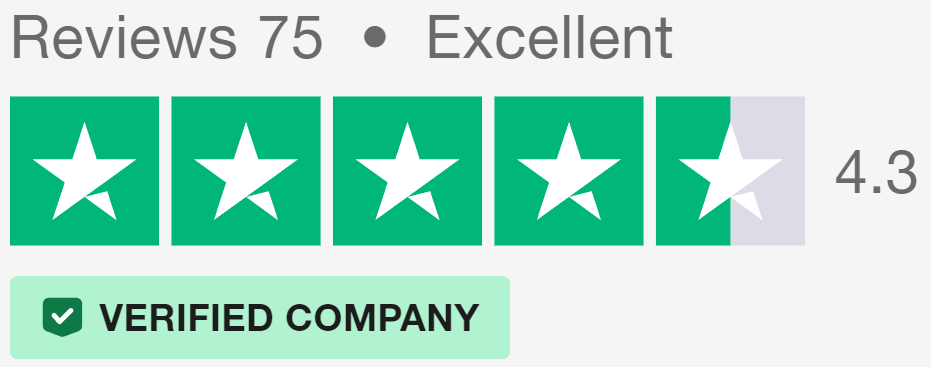
Modern British homes need more than just standard external doors. External folding doors, also known as concertina doors or bifold doors, let you open up entire walls, turning your garden into a natural extension of your living space. Unlike traditional patio doors, they fold away completely to create wide, unobstructed openings up to 7 or more metres wide.
What Are External Folding Doors?
Glass panels connected by hinges form the basic structure of external bi folding doors. Each panel slides along a track and folds neatly to one or both sides, stacking flat against your walls. The result? A flexible opening that adapts to different weather conditions and social situations.
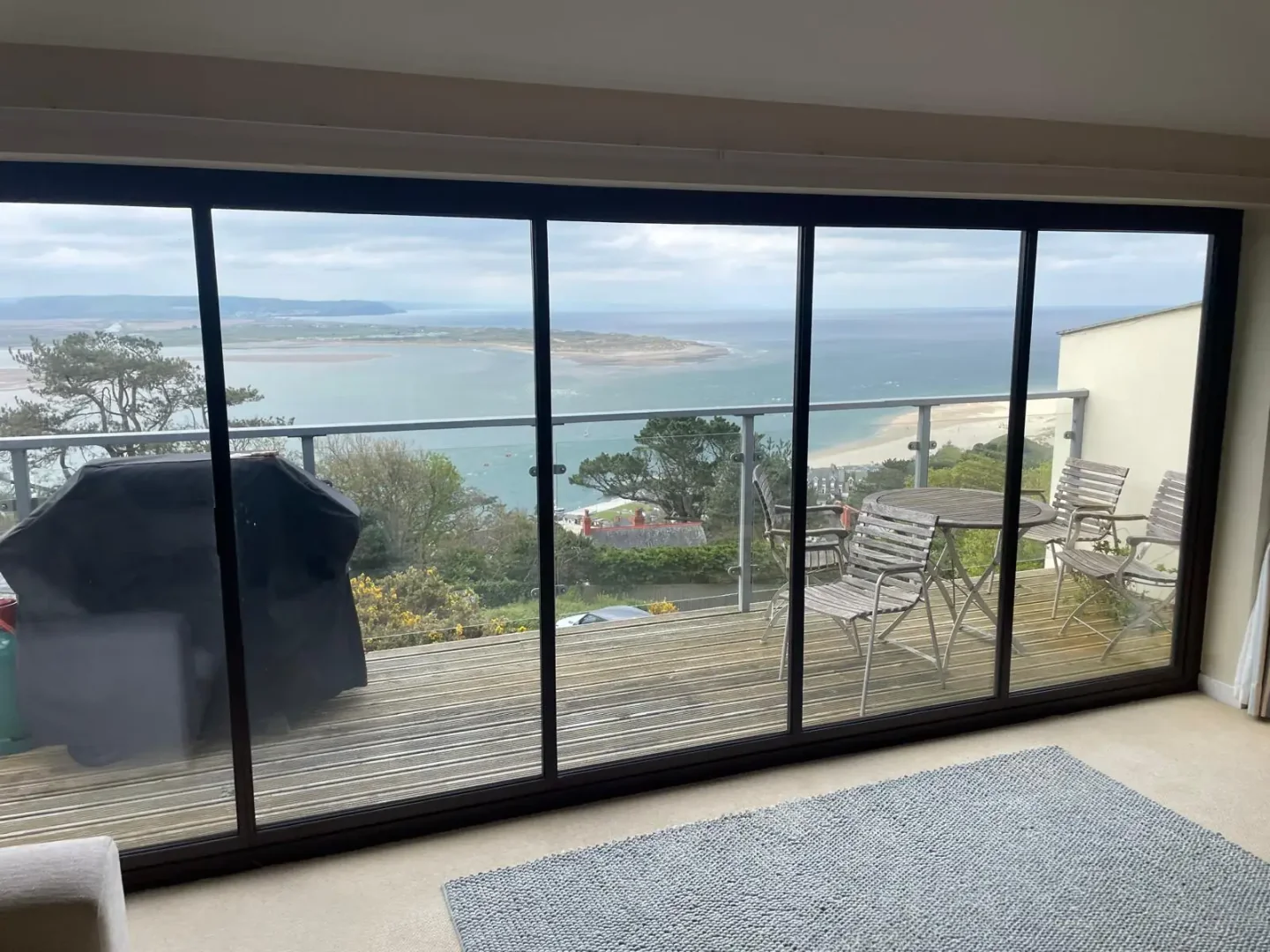
How External Folding Doors Work
Precision-engineered running gear sits at the heart of contemporary bifold doors. Small wheels mounted in the track guide each panel smoothly along its path, while hinges connect the panels and allow them to fold. Top-hung systems suspend the weight from above, creating effortless movement even across wider spans.
When closed, gaskets and seals between each panel work together to keep out wind and rain. Multiple locking points along the frame add security, while energy efficient design features such as thermal breaks in the frame prevent heat loss. A properly installed system needs just a gentle push to set the panels in motion.
Magnetic catches hold the folded panels in place when fully opened. Advanced exterior folding doors include built-in adjustment points that maintain smooth operation as buildings naturally settle over time. Specially designed brushes in the track clear away debris that might otherwise affect the rolling action.
Main Components
The frame forms the backbone of your installation, typically made from thermally broken aluminium for strength and insulation. Running tracks guide the movement, while the wheels and hinges handle the mechanical operation. Toughened double-glazed panels make up most of the visible surface, fitted into the frame sections with high-performance gaskets.
Heavy-duty locks and handles control access and security. Most systems include at least a multi-point locking system on the main traffic door, with additional locking points on the folding panels. Drainage channels built into the bottom track direct water away from your home during wet weather.
Configurations of External Folding Doors
Different layouts suit different spaces and needs. External folding doors come in various configurations, from simple three-panel designs to expansive six or eight-panel systems that span entire walls.
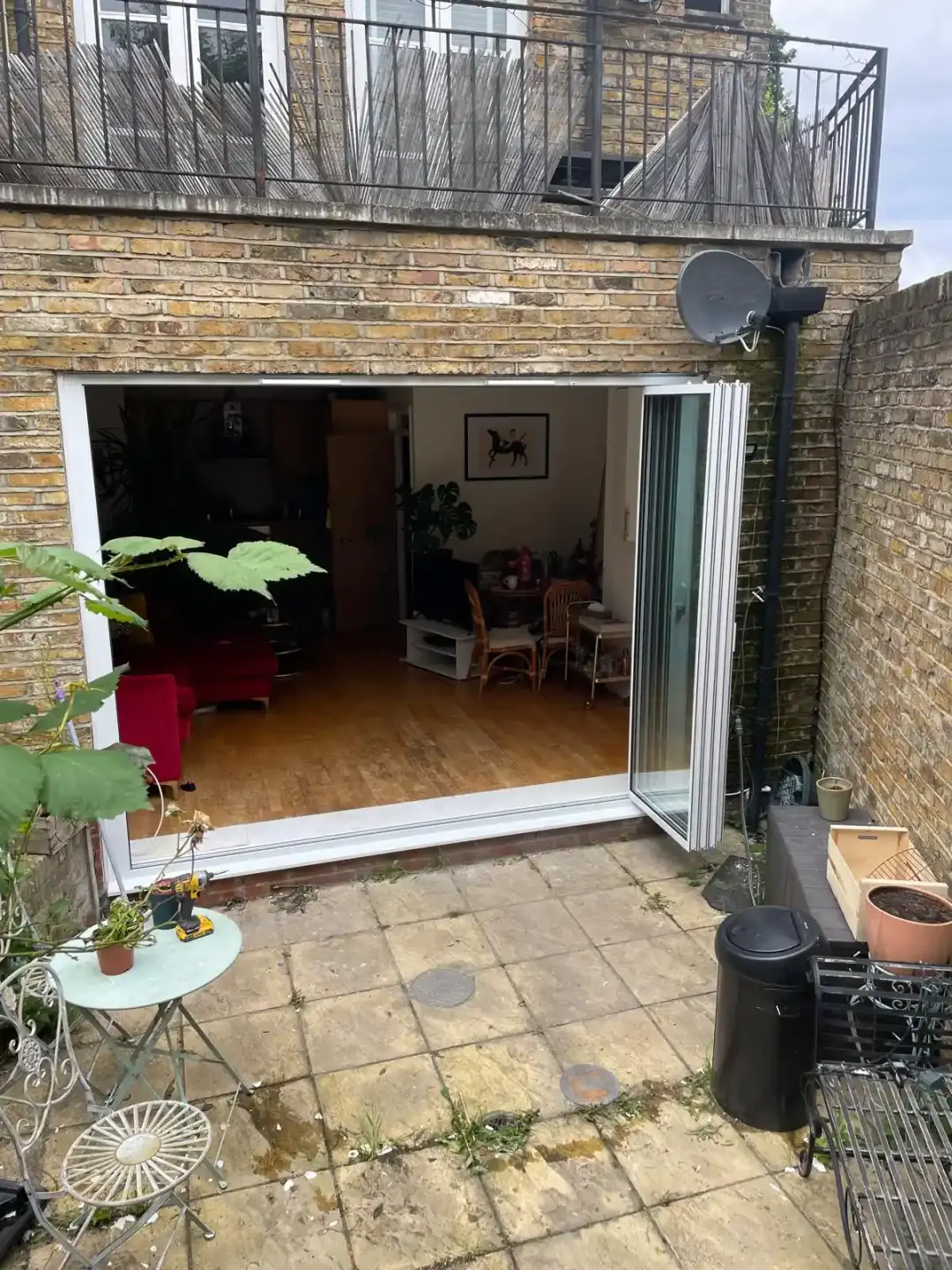
Bifold Systems
Most external bi folding doors stack to one side, though larger openings often split into two sets that fold to opposite sides. Three-panel or 4 panel bifold doors prove popular for standard-width openings around 2.4 to 3 metres, while wider spaces might need five or more panels. The panels fold flat against each other when opened, taking up minimal space at the sides of your opening.
A three-panel bi-fold door typically splits with two panels folding one way and a single panel acting as the main access door. For wider openings, exterior folding glass doors often use a 3-3 or 4-4 split, creating a balanced look when opened or closed. The panels fold outward in most cases, though some systems can fold inward if outside space is limited.
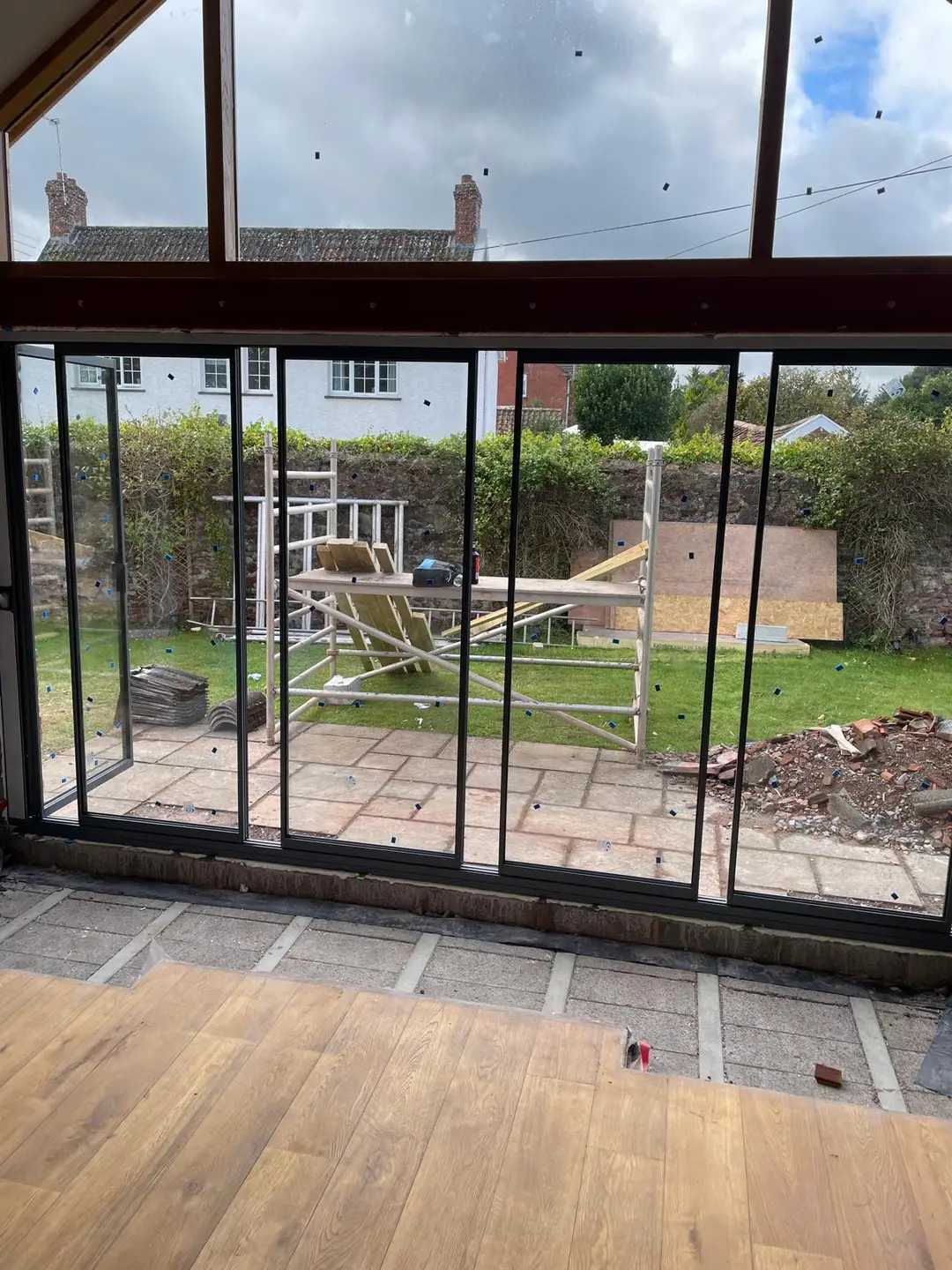
Slide and Turn Systems
Unlike standard bi-fold doors, slide and turn doors move differently. Each panel slides individually along the track before pivoting at the end, creating a neat stack without the accordion effect of traditional designs. This bifold door alternative works well when you want easier control over ventilation, as you can open just one or two panels rather than a whole section.
The panels in slide and turn systems stack at 90 degrees to the frame, rather than parallel to it. This design choice often saves space and allows for larger glass panels, as each one moves independently rather than being connected by hinges. External bifolding doors using this system tend to have smoother operation since the panels don’t pull against each other during movement.
Access Door Options
Daily convenience often calls for a separate access door built into your configuration. This traffic door works just like a standard door, swinging open independently of the folding panels. It saves time and effort when you’re just popping into the garden or letting in fresh air, as you won’t need to fold back multiple panels.
Many homeowners place their traffic door at one end of the system, though central locations work well in larger installations. The best position often depends on your furniture layout and walking routes through your space. External bi-folding doors with a traffic door cost slightly more but tend to be worth the investment for the added practicality they bring to everyday life.
Styles of External Folding Doors
Personal taste and property style guide the choice of external folding doors. Modern homes often suit slim aluminium frames in dark greys or black, while period properties might need something more traditional. Your choice affects both the look of your home and how the doors feel to use.
Aluminium Systems
Modern aluminium bifold doors pack strength into remarkably thin frames, often just 70mm wide. Raw aluminium starts grey but takes powder coating well, letting you pick from hundreds of RAL colours – though anthracite grey and black remain firm favourites. External bifolds made from aluminium need very little upkeep beyond occasional cleaning and checking the tracks.
The strength of aluminium doors allows for taller and wider panels than other materials. This means fewer vertical lines breaking up your view, and less frame visible when the doors are closed. Powder-coated finishes resist scratches and fading, while the material itself won’t warp or expand in changing weather.
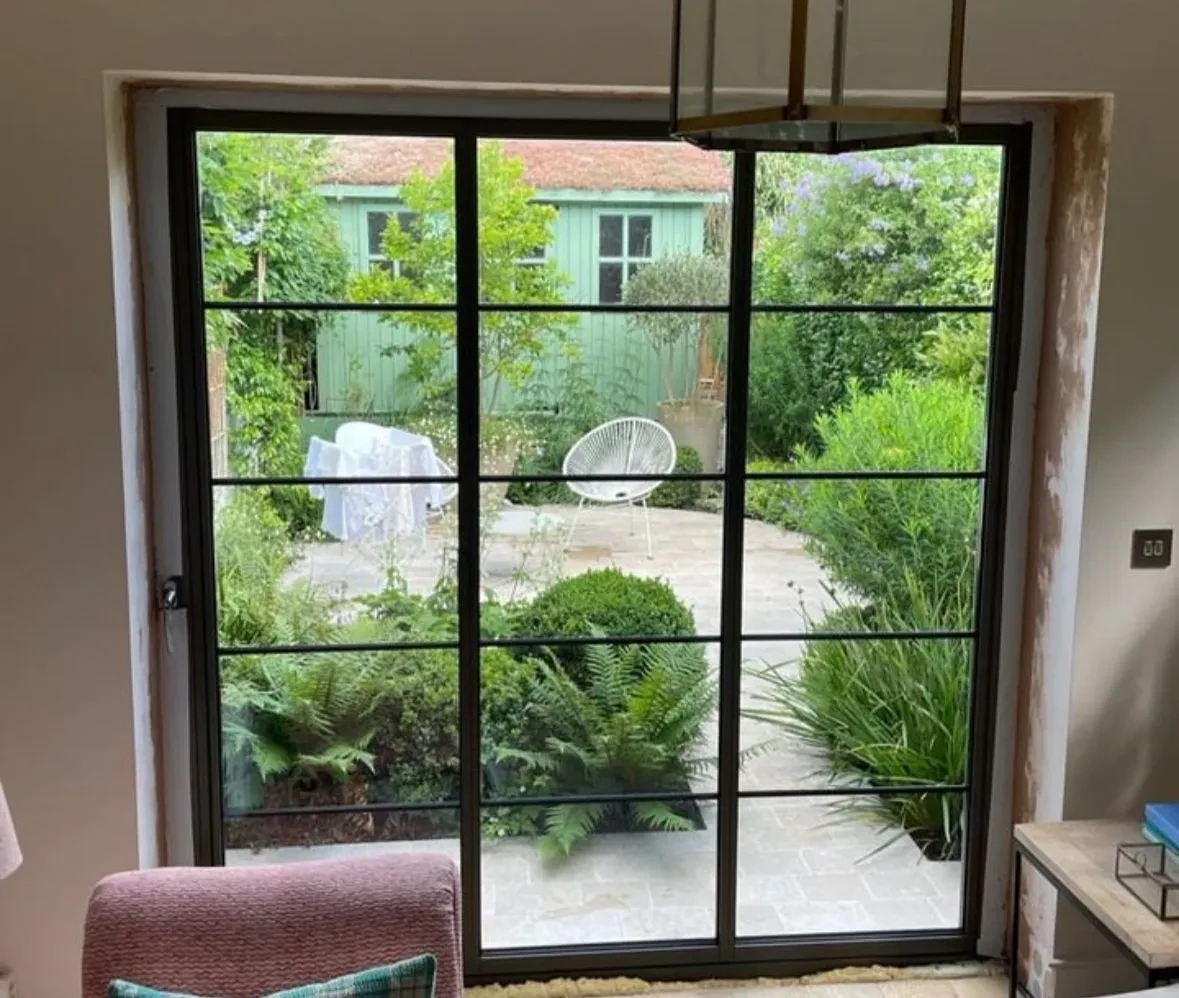
Heritage Designs
Period properties often need heritage patio doors that match their character. External folding doors in this style feature details like Georgian bars and traditional hardware, but hide modern security features and thermal performance inside. Textured powder coating can mimic old lead or steel finishes, keeping the industrial style look without the maintenance headaches.
Deep bottom rails and wider frames echo original steel windows and doors, while modern glass units keep your home warm. The panels themselves stay slim despite the traditional appearance of exterior folding glass doors. Metalwork options include pewter-effect handles and door furniture that looks authentically aged but works smoothly.
Frameless Options
Glass takes centre stage with frameless bi-folding patio doors. The panels seem to float in place, held only by minimal metalwork at the edges. This style focuses on clean lines and clear views, using special glass that’s both tough and thermally efficient.
Despite their delicate appearance, these systems are remarkably robust. Each glass panel in frameless external folding doors undergoes rigorous tempering for strength. Special coatings control solar gain while maintaining clarity, and double or triple glazing provides excellent insulation without compromising the minimal aesthetic.
Materials in External Folding Doors
Materials shape both the performance and appearance of external folding doors. The right combination of frame, glass, and hardware creates a system that works reliably year after year while keeping your energy bills in check. Modern bifold door systems use advanced materials that combine strength with excellent thermal properties.
Frame Materials
Aluminium frames in exterior folding doors provide an ideal mix of strength and style. The metal’s inherent rigidity allows for slimmer frames without compromising stability. Thermal breaks – strips of less conductive material – sit between the inner and outer sections of each frame, stopping heat from escaping through the metal itself.
Smart surface treatments protect the frames from British weather. Powder coating bonds tightly to the metal, resisting chips and scratches while maintaining its colour. External folding doors need this durability to stay looking fresh through years of opening and closing.
Glass Options
Double glazing comes standard in modern external bi folding doors, with two panes of toughened glass separated by an insulating gap. This gap, filled with argon gas, reduces heat loss substantially. Low-emissivity coatings on the glass reflect heat back into your room while letting sunlight through, improving thermal efficiency year-round.
High-traffic areas might benefit from laminated glass, which holds together if broken. Solar control glass helps prevent overheating in south-facing rooms by blocking some heat from the sun. Exterior bi folding doors often mix different glass types – perhaps using toughened glass in lower panels with laminated glass at head height.
Hardware Choices
Quality hardware ensures smooth operation and proper security. Stainless steel handles resist corrosion from rain and sea air, while multi-point locks secure the doors at several points along their height. External folding doors need robust wheels and runners that can handle daily use without wearing out.
Patio doors with built in blinds offer extra privacy and sun control. These integral blinds sit between the glass panes, protected from dust and damage. They operate via magnetic controls on the frame, removing the need for hanging curtains or external blinds that might catch in the doors.
Installation of External Folding Doors
Proper fitting makes all the difference in how external folding doors perform. Even small errors during installation can affect operation and weather protection. Expert installers check every detail, from the levelness of your floor to the strength of the surrounding walls.
Tracking Systems
The track guides your exterior folding doors through every movement. Bottom tracks can sit flush with your floor or rise slightly above it, while top tracks hide discreetly in the frame head. Some external bi folding doors use a twin-track system, with separate channels for rolling and guiding, creating smoother movement even in wider installations.
Load-bearing requirements vary between systems. Bottom-rolling designs place the weight on your floor, needing solid foundations. Top-hung external folding glass doors suspend from above, requiring strong lintels but allowing for a minimal bottom track that’s easier to keep clean.
Threshold Options
Low thresholds help link indoor and outdoor spaces without trip hazards. Modern bifold patio doors can achieve excellent weather protection even with a minimal step, thanks to clever drainage channels and brush seals. The threshold choice often depends on your local weather exposure and how you plan to use the doors.
Some corner bifold doors need no post at the meeting point, opening up two walls at once. This installation type needs careful planning to support the structure above. External folding doors in corner positions often use a slightly higher threshold for extra stability and weather protection.
Weather Performance
British weather demands robust protection from external folding doors. Drainage channels built into the tracks direct water away from your home, while brush seals between panels block drafts. The right combination of seals and drainage lets natural light flood in while keeping wind and rain firmly outside.
Multiple layers of defense protect your home from the elements. Exterior folding patio doors use compression gaskets where panels meet, creating tight seals when closed. Rebated edges on the frames add extra protection, making it harder for water to work its way inside even in driving rain.
External Folding Doors in Different Rooms
Each room presents unique opportunities for external folding doors. The way you use a space affects everything from the ideal configuration to glass choices and threshold types. Smart design choices help each room work better for your lifestyle while keeping your home comfortable year-round.
External Bi-Fold Doors in Living Rooms
Glass living room doors can change how you use your main living space throughout the year. External folding doors spanning a full wall bring in masses of natural light, making the room feel larger and more connected to the garden. The ability to fully open one wall adds an extra dimension to family gatherings and parties.
Solar control glass helps prevent overheating without sacrificing brightness. Exterior folding doors in living spaces often benefit from integral blinds for privacy and light control, especially in street-facing rooms. Adding a matching fixed window above the doors can bring in even more light while maintaining good thermal performance.
Wide openings encourage children and pets to move freely between inside and out during good weather. External folding patio doors with a traffic door let you maintain this connection even in cooler months, making it easy to step outside without opening the whole system. The right frame colour can tie together your interior and exterior design schemes, creating a coherent look that works in all seasons.
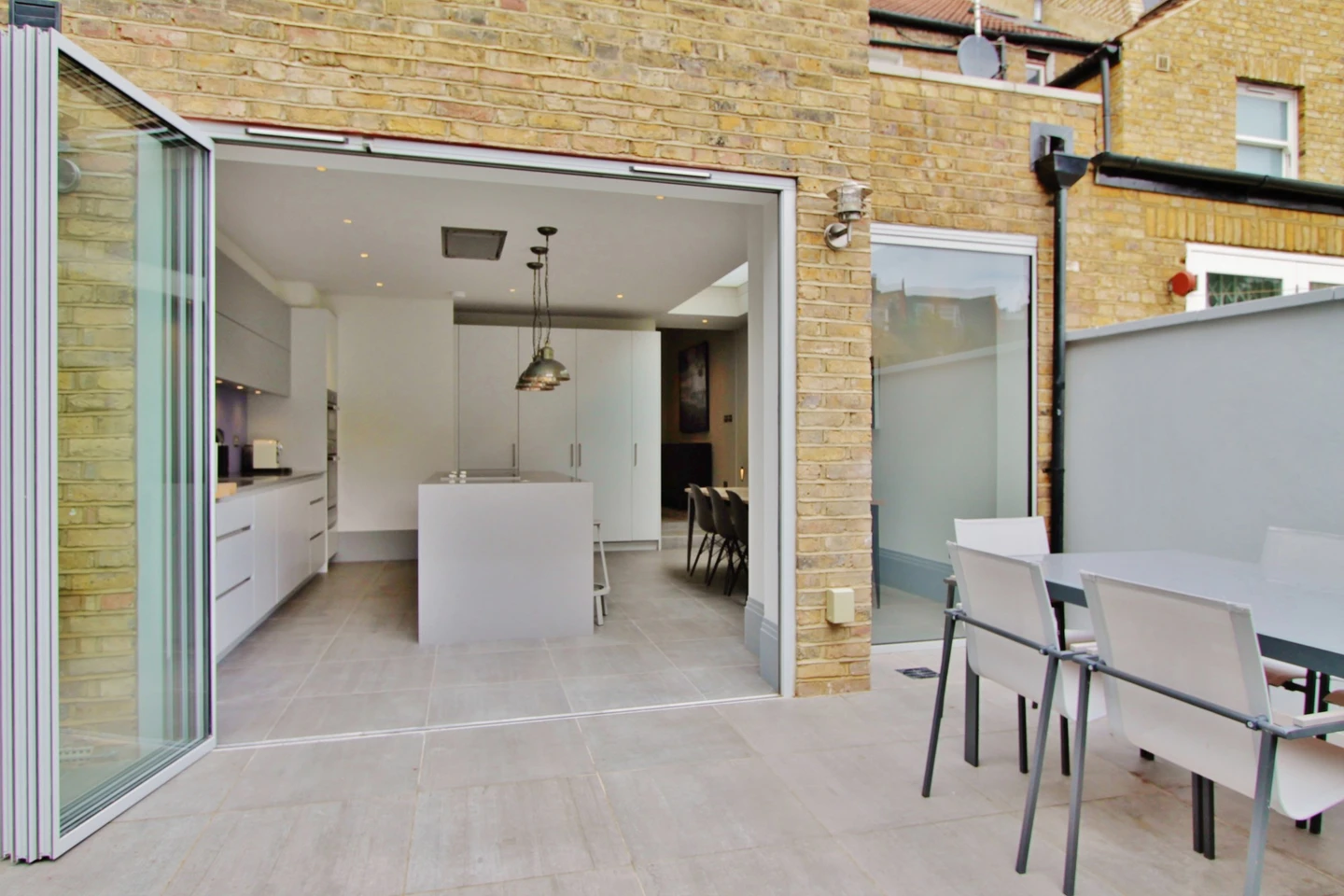
External Folding Doors in Kitchens
External folding patio doors shine in kitchen extensions, where they create wide openings for summer dining and entertaining. A four-panel system spanning 3-4 metres wide can let you move freely between kitchen and garden, perfect for carrying food and drinks outside. Placing the traffic door near the kitchen work area makes it simple to pop out for herbs or to check on the BBQ.
Glass tinted with a slight grey or bronze helps control heat in south-facing kitchens while maintaining clear views. As an alternative to French doors, bi-fold patio doors span much wider openings without a fixed central post blocking the way. Smart glass options help balance energy efficiency with the need for natural light, especially important in deeper extensions where regular windows might not provide enough brightness.
Many homeowners include a canopy or small overhang above their exterior folding doors in kitchen areas. This extra shelter means you can leave the doors open even during light rain, letting fresh air flow while keeping your kitchen dry. Low-threshold options work particularly well in kitchen spaces, creating an even floor level that prevents trips when carrying dishes outside.
External Folding Doors in Garden Rooms
Garden rooms need robust exterior folding doors that can handle frequent use. These spaces often open up completely during summer, essentially becoming covered patios. Multiple sets of doors on different walls can create a true pavilion feel, with the flexibility to adjust openings based on sun position and wind direction.
Panel sizes often run larger in garden room installations, taking advantage of the purpose-built structure’s strength. Floor-to-ceiling glass maximises views of the garden, while careful placing of traffic doors creates natural walking routes through the space. A well-designed garden room with bifold doors becomes a true extra living space, useful for everything from a home offices to a hobby room.
We’d Love to Help You
Vision Glass Doors is a designer, manufacturer, and installer of premium door systems. We are a family run business with over 20 years’ experience and 5,000 installations across the UK.
Our leading range of door systems include Ultra Slim – Slide and Turn Doors, Slimline Sliding Patio Doors and Frameless Glass Doors. Suitable for various internal and external applications, they are applicable to residential and commercial projects.
Click Quick Quote Online for a free quotation within 24 hours. Alternatively, call or email us on 01582 492730 or at info@visionglassdoors.co.uk.

